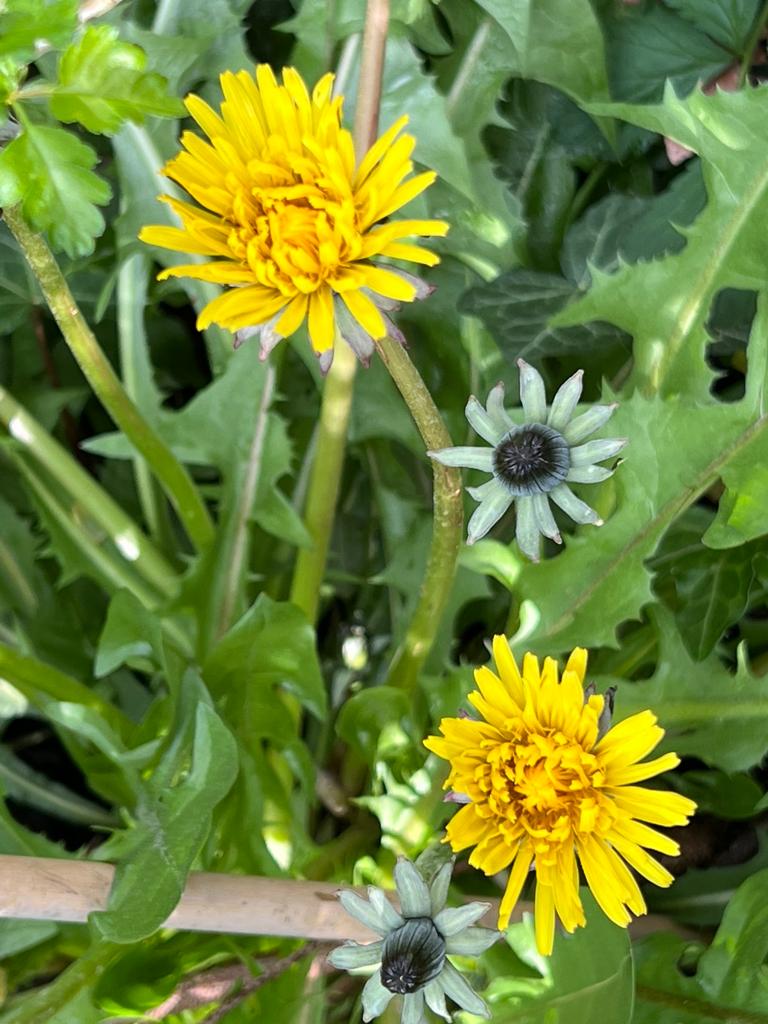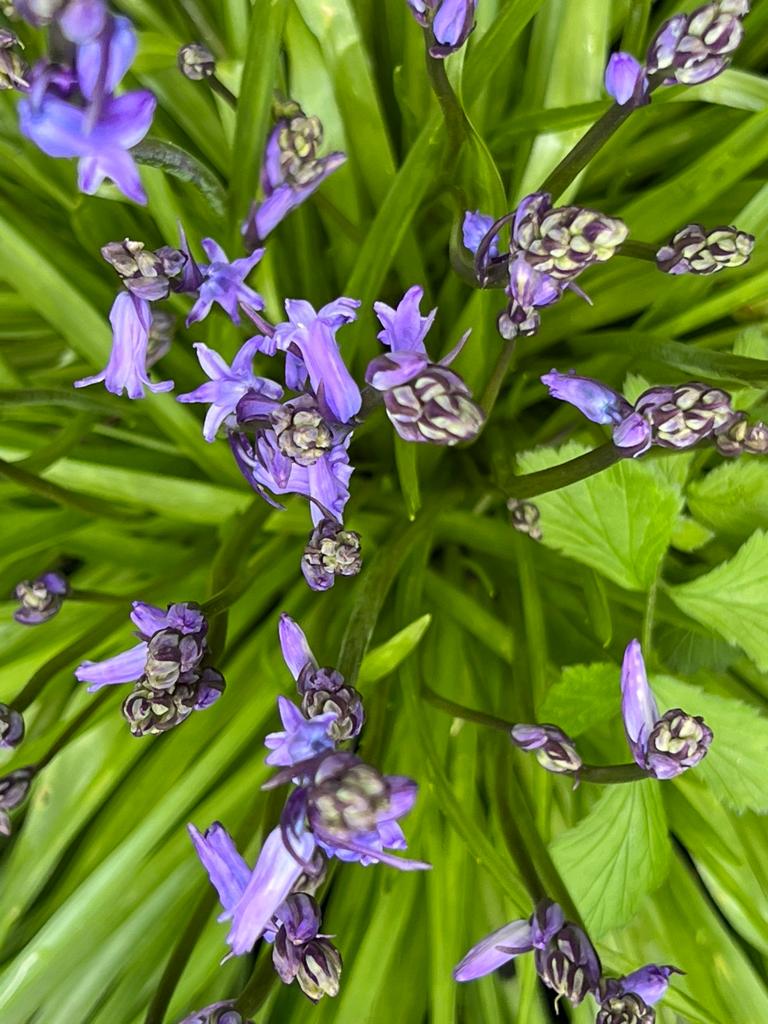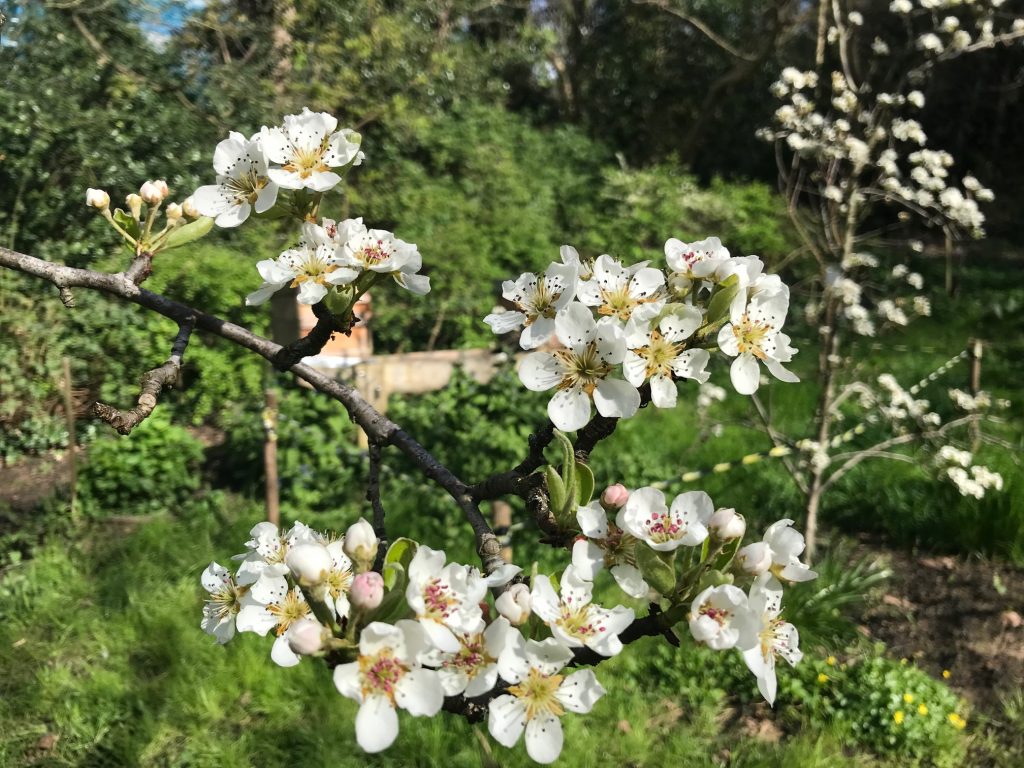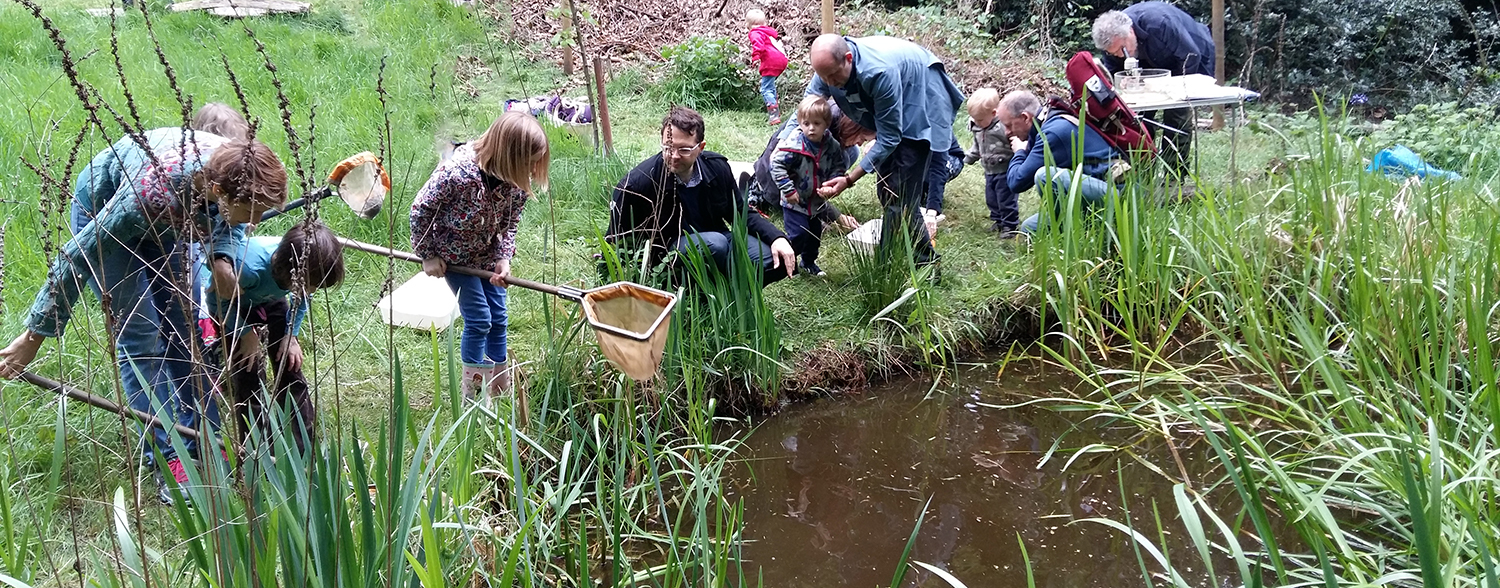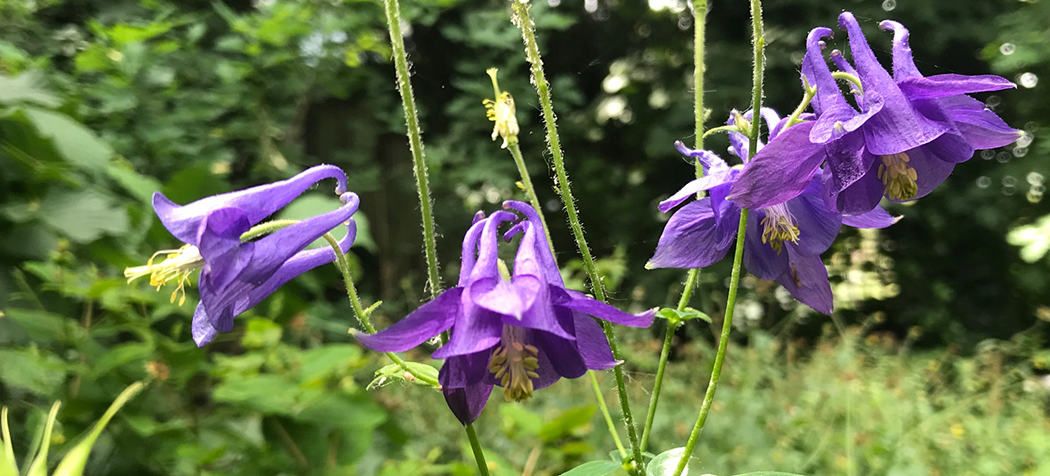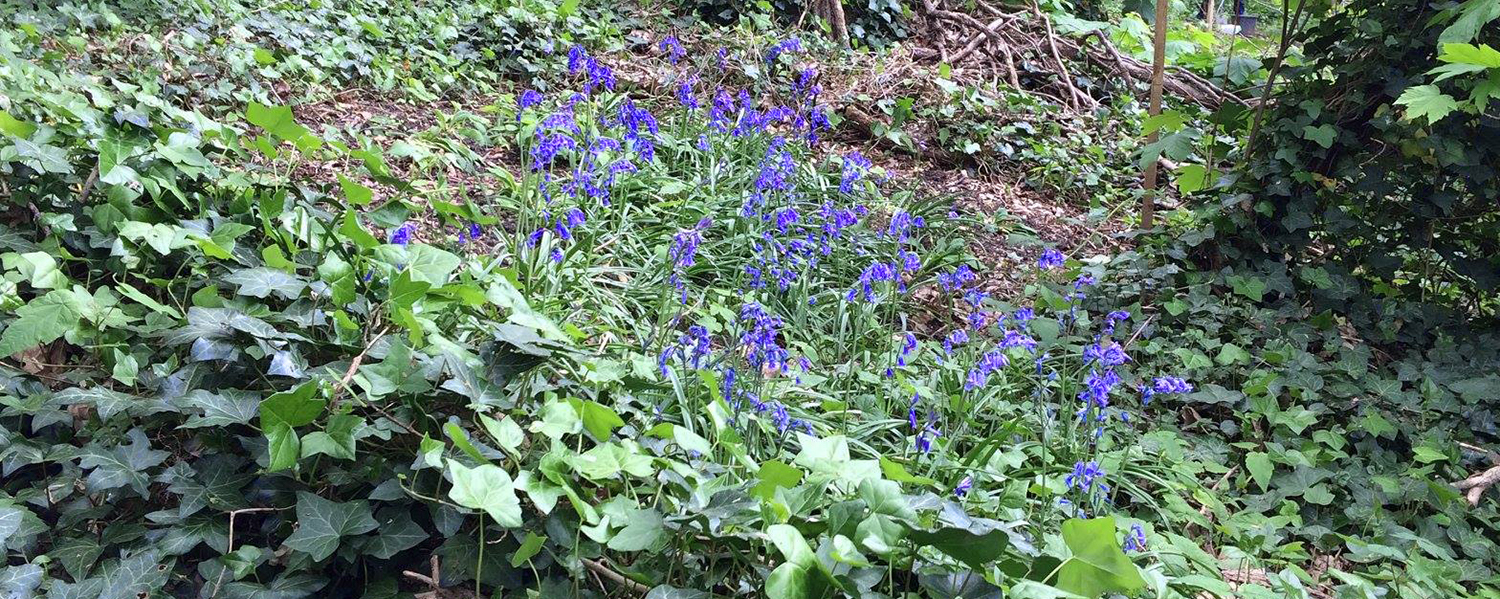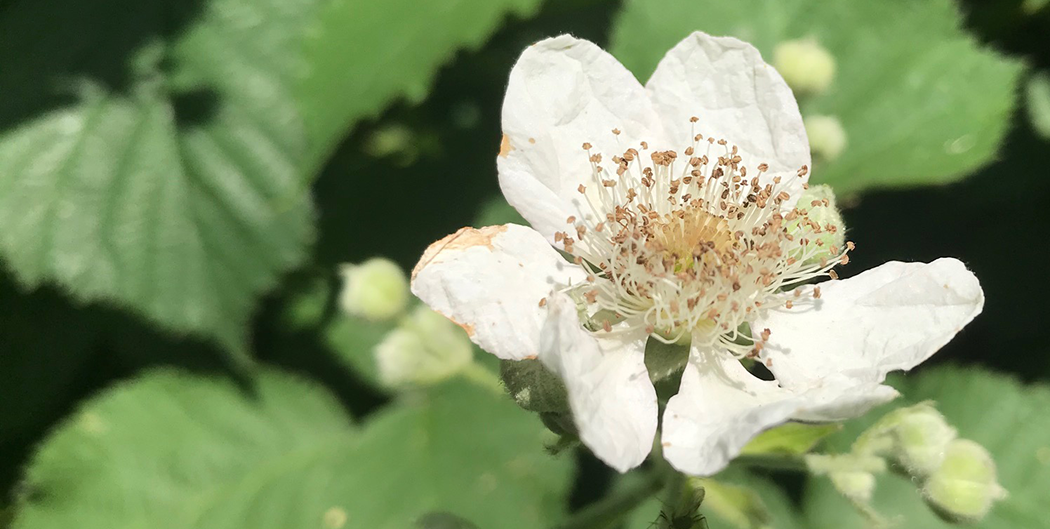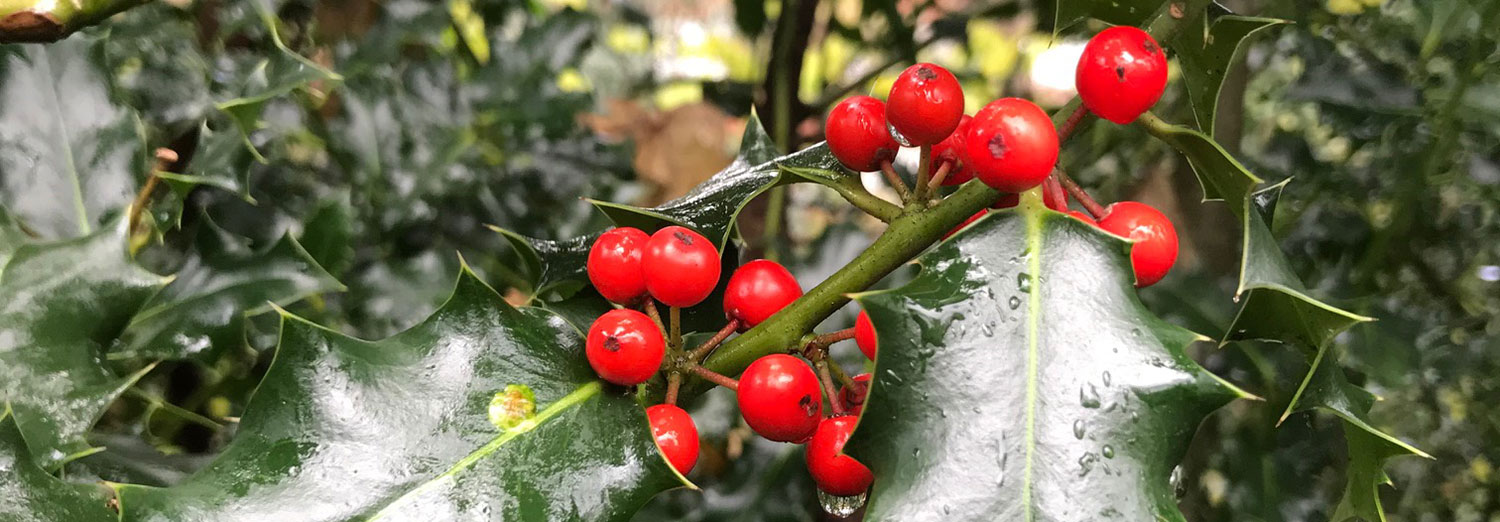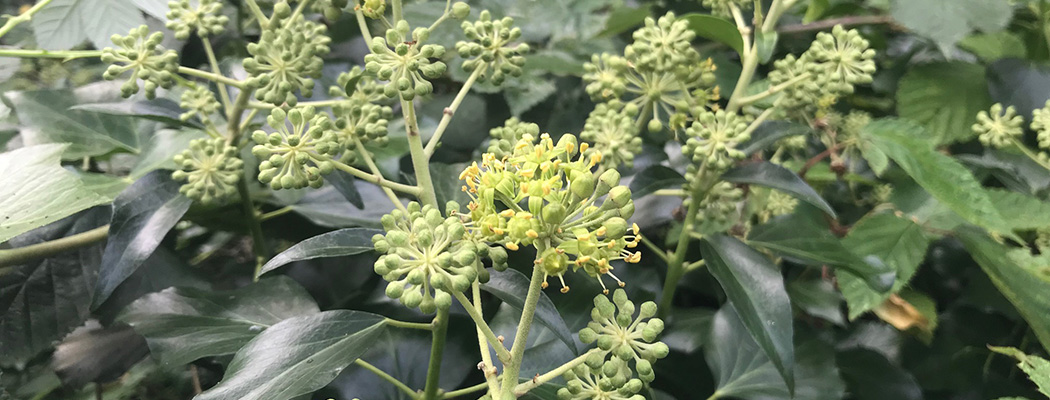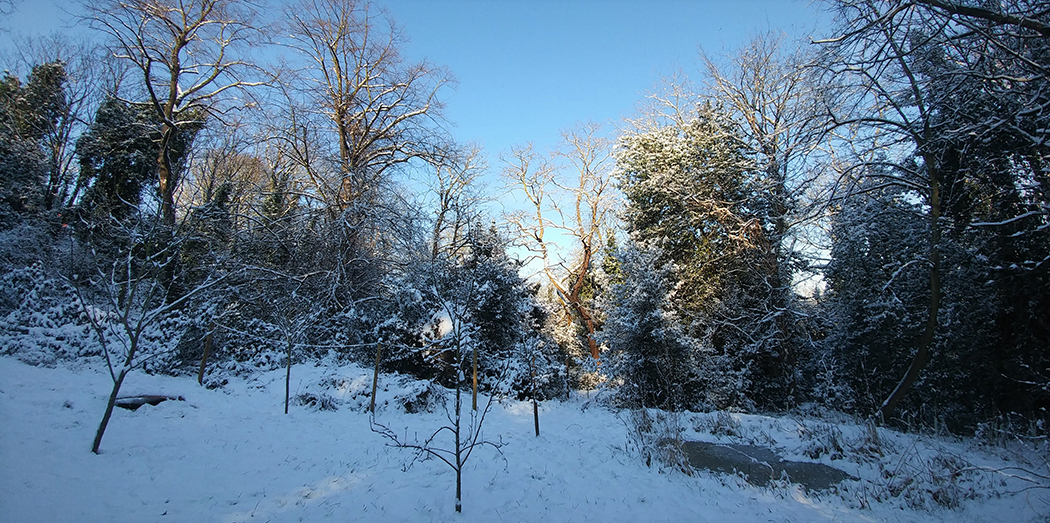On a sunny afternoon in mid-April, we were delighted to have the presence of local resident Jane Lawson join several committee members and others to undertake our regular early-Spring flower survey. The threat of heavy rain in the week failed to materialise and the sun warmed up the woodlands. Below is a list of the plants that were recorded.
1 Lesser celandine ranunculus ficaria
It’s a perennial of hedgerows and open woodland sometimes forming patches. Its folk name is pilewort following the doctrine of signatures which refers to its large number of cylindrical tubers.
2 Ramsons or Wild garlic Allium ursinum
The smell of garlic is unmistakable when it’s in full flower. It likes damp woodland and calcareous soil. The flower stem is three-sided and supports an umbel of about twelve pure white starry blossoms.
3 Fringe cups Tellima grandiflora.
It’s a perennial plant native to Western North America and is now popular in gardens where it frequently escapes. It seems to be spreading widely.
4 Bluebell (probably hybrid) Hyacinthoides non scripta x H hispanica
A bulbous perennial that grows in woodland. Much ink has been spilled and tempers lost over the manifestations of this plant. The native bluebell is smaller with one-sided drooping-tipped spikes.
The Spanish bluebell is only found in Spain and Portugal and is found only in the serra. It seems however that the native bluebell is much more fertile than any hybrids and will back fertilise. Thus each new plant will revert to being closer to the natives. Only a DNA analysis will show the proportions of native to non-native plants.
5 Red dead nettle. Lamium purpureum
Not related to the stinging nettle, but a member of the mint family. It grows on disturbed ground and cultivated soils. It’s doing very well this year perhaps because of the deluges in March.
6 Primrose Primula vulgaris.
Always pale yellow but very rarely a pink form will pop up. At its most abundant in April and May in woodland, hedgerows and shady meadows, its Latin name is derived from primus = first.
7 Dandelion Taraxacum officinale.
There are 250 species of dandelion and even a dandelion appreciation society. For those who are interested BSBI has published a Field Guide to British and Irish dandelions. Its name come from the leaf shape dents-de-lion (lions teeth) and in France Pisenlit because of its diuretic effects.
8 Wood avens Geum urbanum
A member of the rose family, it’s found in shady hedge banks and woodland. It flowers from May to August and was formerly known as Herb Benet or the blessed herb as the trefoiled leaf represented the Trinity and the five petals, the five wounds. Geum derives from the Greek geno meaning an agreeable fragrance which is reminiscent of cloves.
9 Cut leaved cranesbill Geranium dissectum
Found on disturbed ground and cultivated soils. Pink flowers are 8 – 10 mm across.
10 Meadowsweet Spiraea ulmaria
Aptly named for its powerful fragrance, it grows in damp places by ponds or shallow streams. The flowers are in sprays and creamy white. It’s an ancient British plant which has been here since the ice age. Used as a strewing herb on floors in the past it also contains salicylic acid and was used like aspirin today for headaches and such. It also flavours alcoholic drinks and is used in Norfolk punch.
11 Dock Rumex obtusifolius
Extremely common and used as a remedy for nettle stings. There were, I think Water docks by the margins of the pond
12 Ribwort plantain Plantago lanceolata
Grows on disturbed ground and tracks. The leaves are characterised by having strongly developed parallel ribs on the undersurface.
13 Salad burnet Poterium sanguisorba
It likes chalky ground and smells of cucumber when crushed. It can be added to salads and flowers from June to August.
14 Garlic Mustard (Jack by the Hedge) Sisymbrium officinale
It’s flowers are small and white and this plant can be found by hedges and pathways in great abundance. It’s very widespread and the garlic scent is strong. Again, it can be added to salads.
15 Creeping buttercup Ranunculus repens
Very common and widespread it sends out long runners which aid its spread. It flowers from May to August.
16 Herb Robert Geranium robertianum
A straggling hairy annual the smell of which some find unpleasant giving rise to its country name Stinking Bill. The flowers are pink to red.
17 Lemon balm Melissa officinalis
Another one from the mint family with an intense lemon scent. It makes an excellent tea and flavouring. Bees love it. It has small white flowers in the summer.
18 Soapwort. Saponaria officinalis
A straggling hairless perennial found in damp woodland it has attractive pink flowers and is often an escape. The leaves can be soaked to produce a liquid soap which is still used to clean antique carpets.
19 Annual mercury Mercurialis perennis
The god Mercury is supposed to have discovered some medicinal virtues in this plant. It doesn’t have the hairiness of the Dog’s mercury, it has yellowish-green flowers.
20 Iris (yellow flag) Iris pceudocorus
Found at the edge of ponds, streams and ditches it is bright yellow with faint purplish veins.
21 Hogweed (cow parsnip) Heracleum sphondylium
An unmistakable tall plant of waste spaces and hedgerows. It can grow to six feet and has great umbels of white flowers. It flowers from June to September.
In the winter its large hollow stems provide safe overwintering for many small insects.
